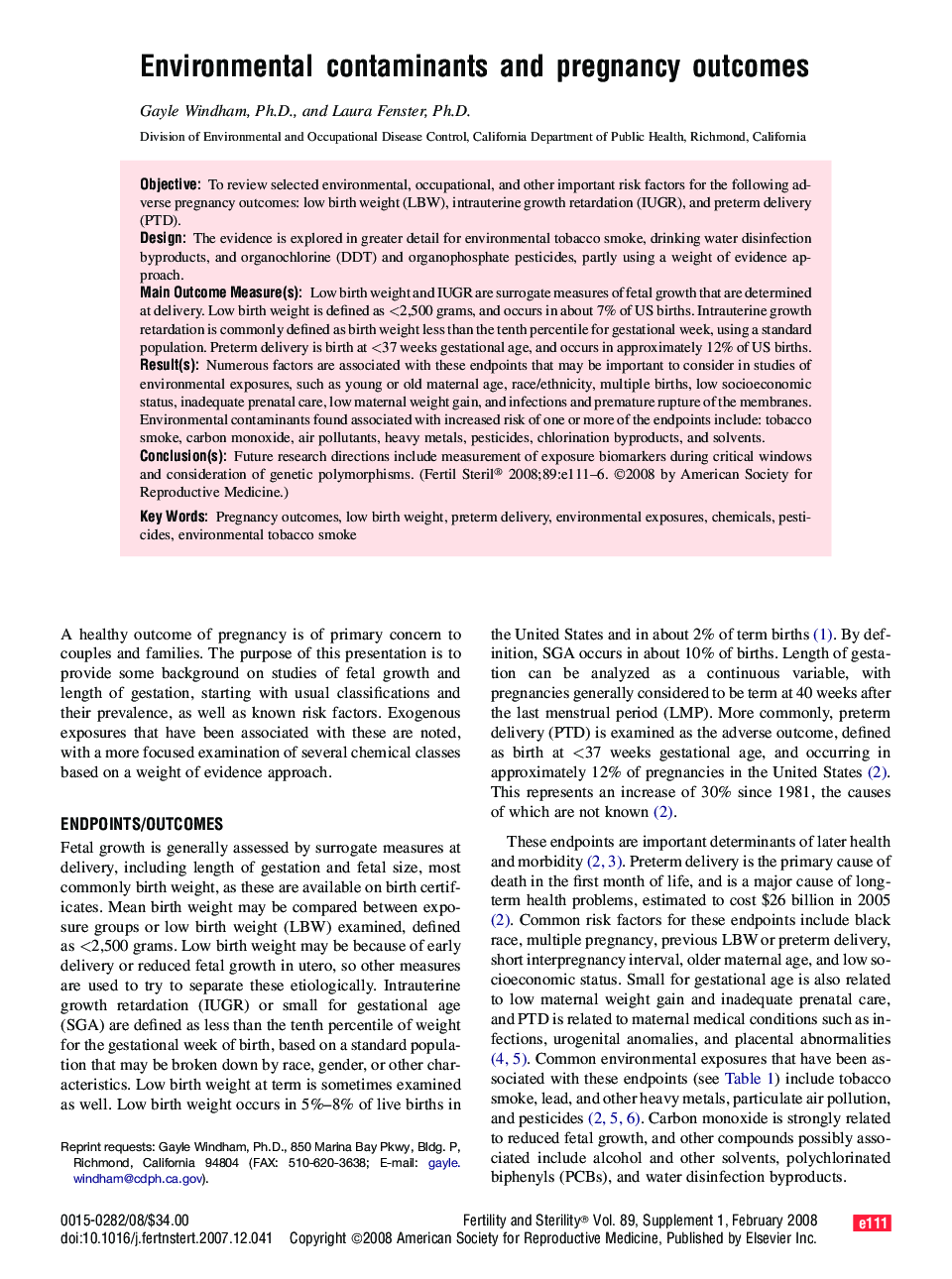| Article ID | Journal | Published Year | Pages | File Type |
|---|---|---|---|---|
| 3939646 | Fertility and Sterility | 2008 | 6 Pages |
ObjectiveTo review selected environmental, occupational, and other important risk factors for the following adverse pregnancy outcomes: low birth weight (LBW), intrauterine growth retardation (IUGR), and preterm delivery (PTD).DesignThe evidence is explored in greater detail for environmental tobacco smoke, drinking water disinfection byproducts, and organochlorine (DDT) and organophosphate pesticides, partly using a weight of evidence approach.Main Outcome Measure(s)Low birth weight and IUGR are surrogate measures of fetal growth that are determined at delivery. Low birth weight is defined as <2,500 grams, and occurs in about 7% of US births. Intrauterine growth retardation is commonly defined as birth weight less than the tenth percentile for gestational week, using a standard population. Preterm delivery is birth at <37 weeks gestational age, and occurs in approximately 12% of US births.Result(s)Numerous factors are associated with these endpoints that may be important to consider in studies of environmental exposures, such as young or old maternal age, race/ethnicity, multiple births, low socioeconomic status, inadequate prenatal care, low maternal weight gain, and infections and premature rupture of the membranes. Environmental contaminants found associated with increased risk of one or more of the endpoints include: tobacco smoke, carbon monoxide, air pollutants, heavy metals, pesticides, chlorination byproducts, and solvents.Conclusion(s)Future research directions include measurement of exposure biomarkers during critical windows and consideration of genetic polymorphisms.
